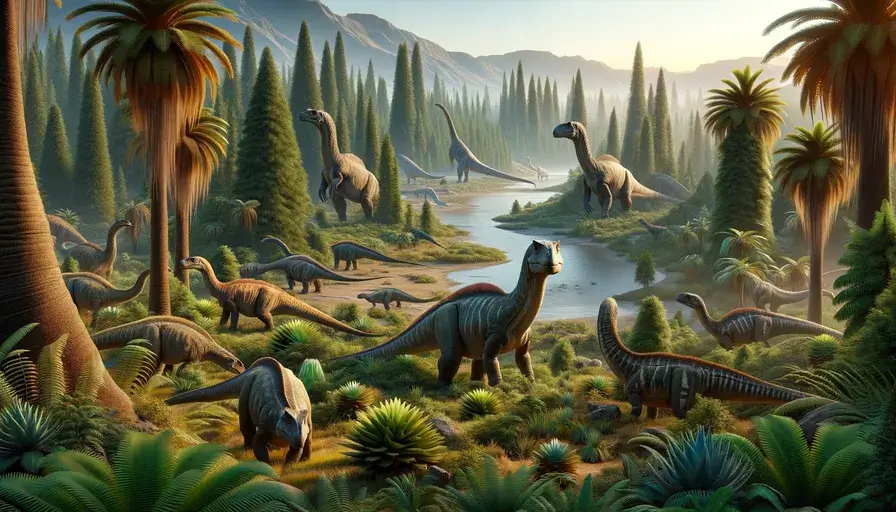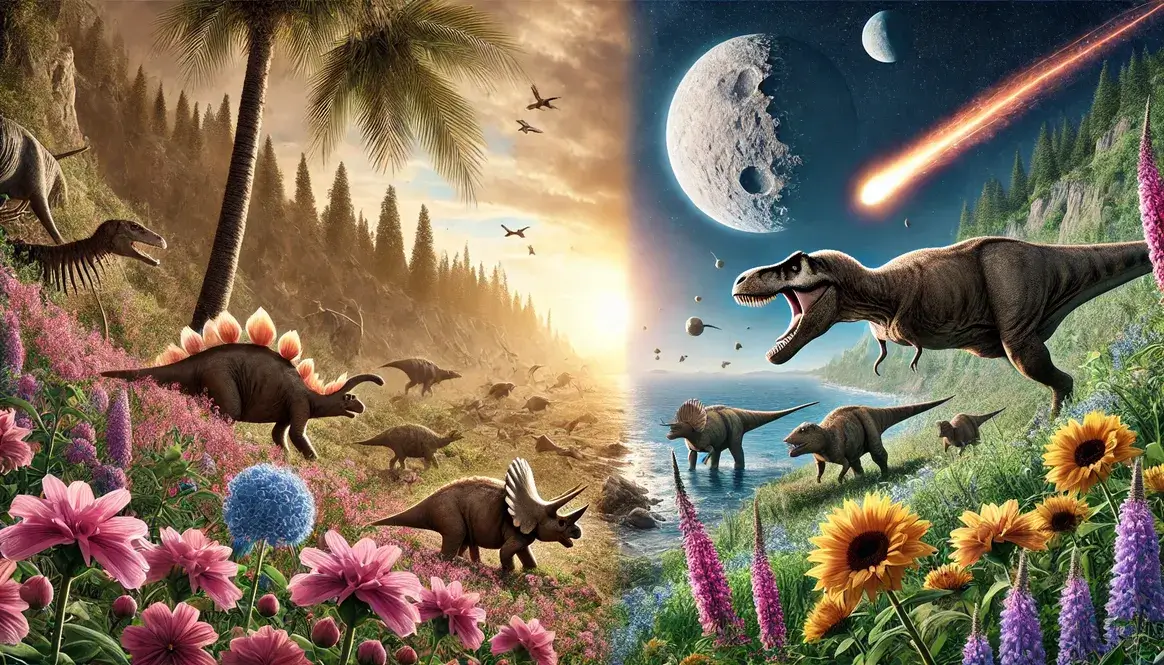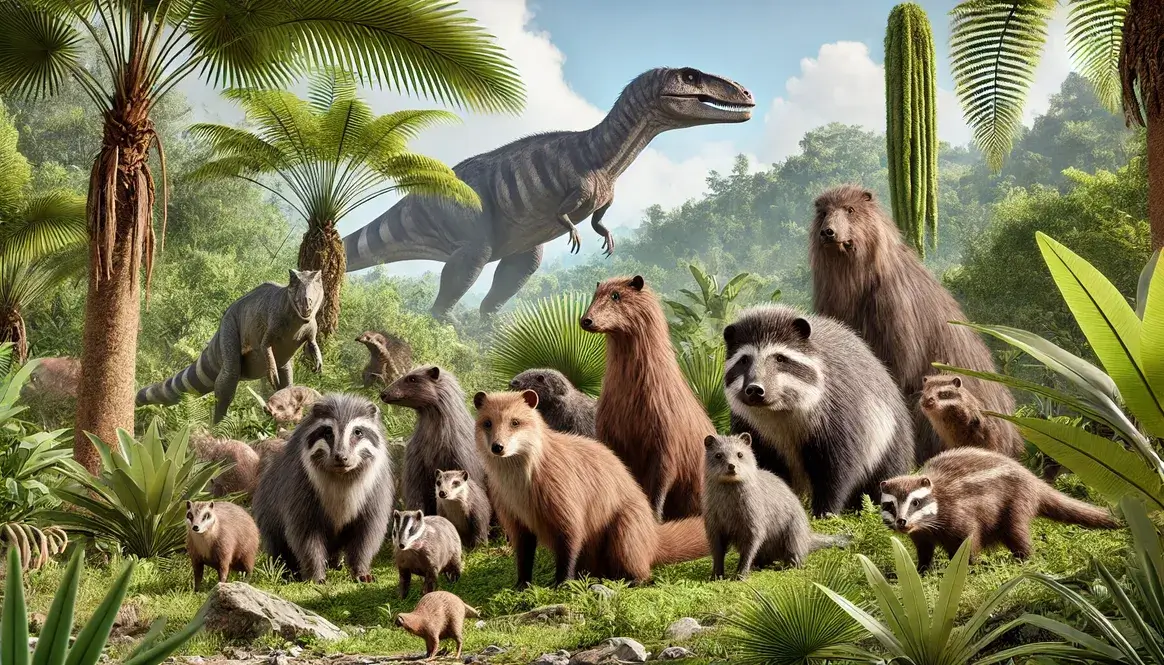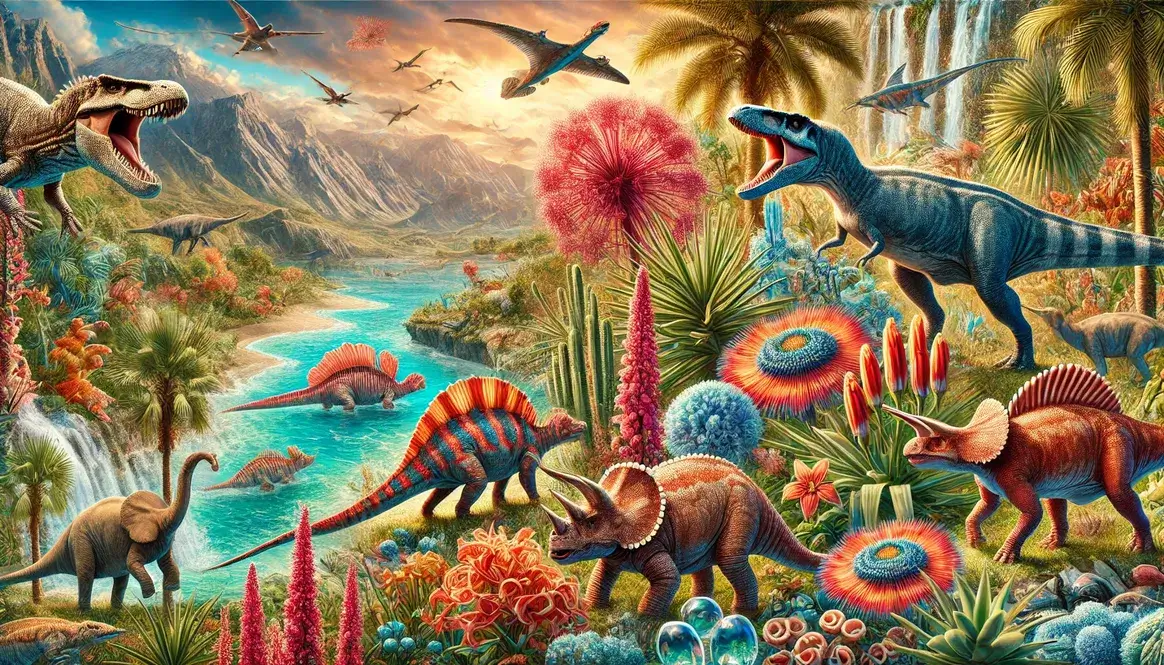Hey there, dinosaur enthusiasts! Today, we’re diving into the fascinating world of titanosaurs, the last of the giant sauropods. These colossal creatures roamed the Earth during the Late Cretaceous period, leaving behind a legacy that continues to captivate paleontologists and dinosaur lovers alike.
In this article, we’ll explore:
- The evolution of sauropods
- Their incredible anatomy and adaptations
- Groundbreaking fossil discoveries
- The world they inhabited
So, let’s embark on a journey back in time and discover the secrets of these prehistoric giants!
The Evolution of Sauropods: A Timeline
To understand titanosaurs, we first need to take a step back and look at the bigger picture: the evolution of sauropods.
| Era | Period | Key Events |
|---|---|---|
| Early Jurassic | 201-174 million years ago | First sauropods appear, like Vulcanodon and Barapasaurus |
| Middle Jurassic | 174-163 million years ago | Sauropods diversify and grow larger, with iconic genera like Brachiosaurus and Diplodocus |
| Late Jurassic | 163-145 million years ago | Sauropods continue to thrive, but many lineages go extinct by the end of the Jurassic |
| Early Cretaceous | 145-100 million years ago | Titanosaurs evolve from earlier sauropods and become the dominant herbivores |
| Late Cretaceous | 100-66 million years ago | Titanosaurs reach their peak diversity and size, with genera like Dreadnoughtus, Patagotitan, and Futalognkosaurus |
Sizing Up Titanosaurs: An Infographic Comparison
Now that we’ve seen how titanosaurs fit into the bigger picture of sauropod evolution, let’s take a closer look at just how big these dinosaurs really were. Check out this infographic comparing the sizes of titanosaurs to other sauropods and modern-day animals:
As you can see, titanosaurs were in a league of their own when it came to size. The largest known titanosaur, Patagotitan mayorum, was over 120 feet (37 meters) long and weighed an estimated 76 tons (69 metric tons)!
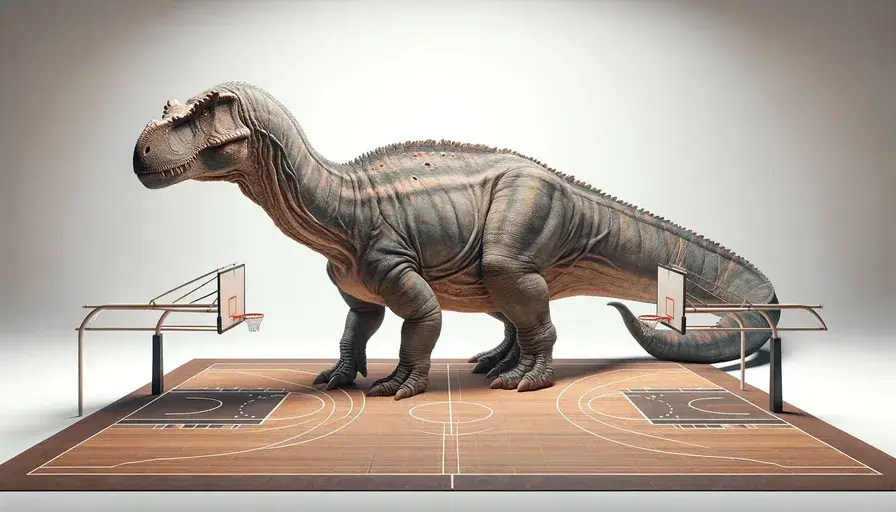
To put that in perspective, that’s longer than a basketball court and heavier than a space shuttle. And while Patagotitan may have been the biggest, it was far from the only giant titanosaur. Other contenders for the title of “largest dinosaur” include:
- Argentinosaurus huinculensis: This massive titanosaur from Argentina was one of the first to challenge Patagotitan for the title of “biggest dinosaur.” Estimates suggest it was around 115 feet (35 meters) long and weighed up to 80 tons (73 metric tons).
- Dreadnoughtus schrani: With a name meaning “fears nothing,” Dreadnoughtus was a formidable titanosaur from Argentina. It measured around 85 feet (26 meters) long and weighed about 65 tons (59 metric tons), making it one of the most complete giant titanosaur skeletons ever found.
- Alamosaurus sanjuanensis: This hefty herbivore from North America was one of the last surviving sauropods in the region. It could reach lengths of over 90 feet (27 meters) and weigh up to 70 tons (64 metric tons).
Anatomical Breakdown: Exploring Titanosaur Biology
So, what made titanosaurs so successful? Let’s take a closer look at their anatomy and adaptations:
Skeletal Structure
Titanosaurs had the classic sauropod body plan, with a small head, long neck, bulky body, and long tail. However, they had some unique features that set them apart from other sauropods:
- Vertebrae: Titanosaurs had specialized vertebrae that were riddled with air sacs, making their skeletons lighter and more flexible than those of other sauropods. This allowed them to reach even greater sizes without collapsing under their own weight.
- Hips and legs: Most titanosaurs had wide, robust hips and thick, columnar legs that supported their immense bulk. Some species, like Saltasaurus, even had bony osteoderms (armor plates) embedded in their skin for extra protection.
- Tails: Titanosaur tails were incredibly long and muscular, acting as a counterbalance for their necks and helping them move around. Some species, like Alamosaurus, had club-like tail tips that may have been used for defense or display.

Unique Adaptations
Titanosaurs weren’t just big; they were also highly specialized for their environment and lifestyle. Here are some of their most fascinating adaptations:
- Teeth: Unlike earlier sauropods, which had spoon-shaped teeth for stripping leaves, titanosaurs had peg-like teeth that were better suited for cropping vegetation. This allowed them to feed on a wider variety of plants and helped them thrive in the changing landscapes of the Cretaceous.
- Nostrils: Some titanosaurs, like Saltasaurus and Rapetosaurus, had unusually large, upward-facing nostrils. This may have helped them breathe more easily while feeding, or it could have been used for display or communication.
- Neck posture: While earlier sauropods are often depicted with their necks held high, many titanosaurs had necks that were more horizontally oriented. This would have allowed them to sweep their heads from side to side while feeding, covering a wider area and consuming more food.
Feeding Habits and Digestive System
As herbivores, titanosaurs had to eat a tremendous amount of plant matter to fuel their massive bodies. Studies of their teeth and jaws suggest that they were generalists, feeding on a wide variety of vegetation including conifers, cycads, and ferns. Some scientists have even suggested that titanosaurs may have been able to chew their food to some degree, unlike earlier sauropods.
To process all this plant matter, titanosaurs had a highly specialized digestive system. Like other sauropods, they likely had a multi-chambered stomach filled with gastric stones (gastroliths) to help grind up tough plant fibers. They also had an enlarged colon and probably relied on gut bacteria to break down cellulose, much like modern herbivores such as elephants and rhinos.
Locomotion and Movement
Despite their massive size, titanosaurs were surprisingly agile and mobile. Their columnar legs and wide, padded feet allowed them to support their weight while moving around, and their flexible vertebrae and muscular tails helped them balance and maneuver. Some titanosaurs, like the armored Saltasaurus, may have even been able to rear up on their hind legs to reach higher vegetation.
Recent studies of titanosaur trackways have revealed even more about how these giants moved. For example, a set of tracks in Australia suggests that some titanosaurs may have traveled in herds, with adults and juveniles moving together. Other trackways show evidence of titanosaurs wading or swimming, indicating that they were comfortable in the water despite their size.
Fossil Discoveries and Excavations
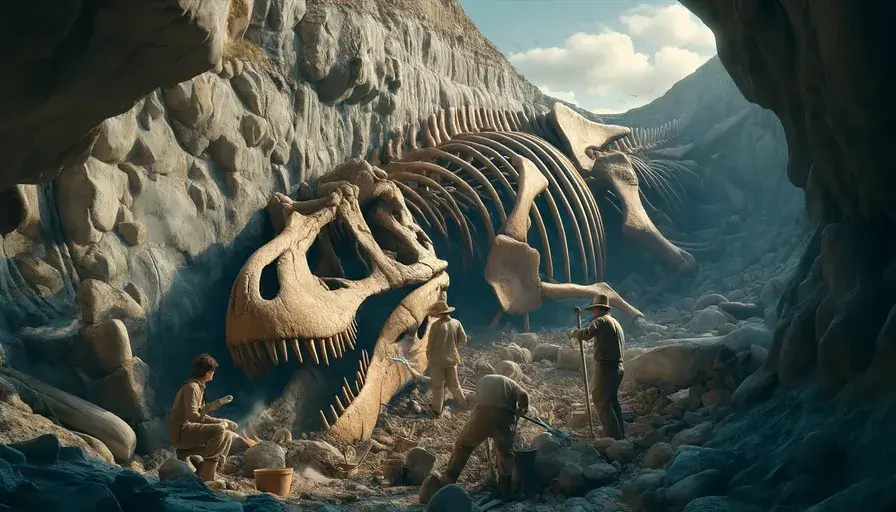
Our understanding of titanosaurs has been greatly enhanced by the incredible fossil discoveries and excavations of recent years. Here are some of the most groundbreaking finds:
Notable Titanosaur Fossil Finds
- Argentinosaurus: Discovered in 1987 in Argentina, one of the first truly gigantic titanosaurs ever found
- Dreadnoughtus: Unearthed in 2005 in Argentina, one of the most complete giant titanosaur skeletons, with over 70% of the skeleton preserved
- Patagotitan: Discovered in 2012 in Argentina, currently the largest known titanosaur based on the size of its femur
The Process of Excavating and Studying Titanosaur Fossils
Excavating and studying titanosaur fossils is no easy feat, given their immense size and the often-remote locations where they are found. Here’s a quick overview of the process:
- Discovery: Titanosaur fossils are often found by chance, either by local farmers or paleontologists surveying an area.
- Excavation: Once a fossil is located, paleontologists carefully excavate around it, using tools like pickaxes, shovels, and brushes to remove the surrounding rock and sediment. This process can take weeks or months, depending on the size and fragility of the specimen.
- Preparation: After the fossil is removed from the ground, it is transported to a lab for preparation. This involves carefully cleaning the bones, removing any remaining rock or sediment, and treating them with consolidants to prevent further damage.
- Reconstruction: Once the individual bones are prepared, paleontologists work to reconstruct the skeleton, either physically or digitally. This requires careful measurements and comparisons to other known specimens, as well as knowledge of titanosaur anatomy and biomechanics.
- Study and analysis: With the skeleton reconstructed, paleontologists can begin to study and analyze the specimen in detail. This may involve taking measurements, making casts or 3D scans, and comparing the specimen to other known titanosaurs to determine its species and evolutionary relationships.
The Role of Technology in Paleontology
In recent years, technology has played an increasingly important role in the study of titanosaurs and other dinosaurs. Here are a few examples:
- 3D scanning and printing: By creating detailed 3D scans of titanosaur bones, paleontologists can study them in ways that were previously impossible. These scans can be used to create virtual models, 3D-printed replicas, and even full-scale reconstructions of entire skeletons.
- Computed tomography (CT) scanning: CT scanning allows paleontologists to see inside titanosaur bones without damaging them. This can reveal important details about their internal structure, growth patterns, and even injuries or diseases.
- Biomechanical modeling: Using computer simulations and biomechanical models, researchers can study how titanosaurs moved, fed, and interacted with their environment. This has led to new insights into their posture, gait, and even their potential top speed.
Habitat and Environment: A Glimpse into the Late Cretaceous
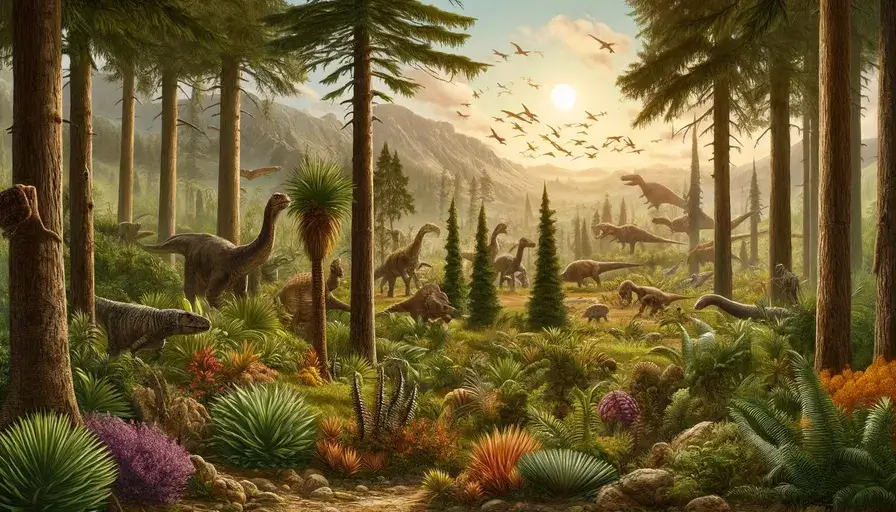
To truly understand titanosaurs, we need to look at the world they lived in. During the Late Cretaceous, the Earth was a very different place than it is today:
Geography and Climate
The continents were in different positions, with the Atlantic Ocean just beginning to open up. The climate was generally warmer and more humid than it is now, with no polar ice caps and sea levels up to 200 meters higher than they are today. This created vast inland seas and coastal plains, which were home to a wide variety of plant and animal life.
Flora and Fauna
The Late Cretaceous was a time of great diversity and change in the world of plants and animals. Flowering plants (angiosperms) were just starting to appear, but conifers, cycads, and ferns still dominated many ecosystems. These plants provided food for titanosaurs and other herbivorous dinosaurs, as well as habitats for smaller animals like mammals, birds, and insects.
In addition to titanosaurs, the Late Cretaceous was home to a wide variety of other dinosaurs, including:
- Theropods: Carnivorous dinosaurs like Tyrannosaurus rex, Velociraptor, and Spinosaurus were at the top of the food chain, preying on other dinosaurs and smaller animals.
- Ceratopsians: Horned dinosaurs like Triceratops and Styracosaurus were common herbivores, using their bony frills and horns for defense and display.
- Hadrosaurs: Duck-billed dinosaurs like Parasaurolophus and Edmontosaurus were also herbivores, and may have lived in herds alongside titanosaurs.
- Ankylosaurs: Armored dinosaurs like Ankylosaurus and Euoplocephalus were walking fortresses, with bony plates and clubs for defense against predators.
Other notable animals of the Late Cretaceous included:
- Pterosaurs: Flying reptiles like Quetzalcoatlus and Pteranodon ruled the skies, with some species having wingspans over 30 feet (9 meters).
- Marine reptiles: Plesiosaurs, mosasaurs, and other marine reptiles dominated the oceans, feeding on fish, squid, and even each other.
- Early birds: Birds like Confuciusornis and Ichthyornis were just starting to diversify, and some species had already lost their teeth and developed beaks.
- Mammals: Small, shrew-like mammals scurried underfoot, and some species, like Repenomamus, even preyed on dinosaur hatchlings.
Immersive 360-Degree Images or Virtual Reality Experiences
To really get a feel for what the world of titanosaurs was like, check out these immersive 360-degree images and virtual reality experiences:
- 360-degree image of a Late Cretaceous coastal plain
- Virtual reality experience of a titanosaur habitat
FAQs and Misconceptions
Let’s address some frequently asked questions and misconceptions about titanosaurs:
How did titanosaurs become so large?
There are a few key factors that allowed titanosaurs to reach such enormous sizes:
- Abundant food: The warm, humid climate of the Late Cretaceous provided an abundance of plant life for titanosaurs to feed on. This allowed them to grow quickly and maintain their massive bodies.
- Specialized anatomy: As we’ve seen, titanosaurs had a number of anatomical adaptations that allowed them to support their weight and move around efficiently, such as air-filled vertebrae, wide hips, and columnar legs.
- Long lifespan: Like other sauropods, titanosaurs probably had very long lifespans, perhaps up to 100 years or more. This gave them plenty of time to grow to their full size.
Were all titanosaurs the same size?
No, not all titanosaurs were giants. While some species, like Patagotitan and Argentinosaurus, were among the largest land animals of all time, others were much smaller. For example, Magyarosaurus, a dwarf titanosaur from Romania, was only about 20 feet (6 meters) long and weighed around 1 ton (0.9 metric tons). This diversity in size is one of the things that makes titanosaurs so fascinating to study.
What caused the extinction of titanosaurs?
Titanosaurs, like all non-avian dinosaurs, went extinct at the end of the Cretaceous period, around 66 million years ago. The exact cause of this extinction is still debated, but the most widely accepted theory is that a massive asteroid impact, known as the Chicxulub impact, triggered a chain of events that led to the dinosaurs’ demise.
The impact would have released a huge amount of dust and debris into the atmosphere, blocking out sunlight and causing global cooling. This, in turn, would have disrupted photosynthesis and caused widespread plant die-offs, leading to the collapse of food chains worldwide. Other factors, such as massive volcanic eruptions in India (the Deccan Traps) and sea level changes, may have also contributed to the dinosaurs’ extinction.
Did titanosaurs have any predators?
Despite their huge size, titanosaurs were not invincible. They were preyed upon by large theropod dinosaurs, such as Tyrannosaurus rex and Giganotosaurus. These predators probably targeted young, sick, or injured individuals, as a fully grown titanosaur would have been a formidable opponent. Some paleontologists have even suggested that packs of smaller theropods, like Velociraptor, may have worked together to bring down titanosaur prey.
How did titanosaurs defend themselves?
Titanosaurs had a few different ways of protecting themselves from predators:
- Size: Simply being so large made adult titanosaurs a daunting target for most predators. Only the biggest and most determined theropods would have been able to take on a fully grown titanosaur.
- Armor: Some titanosaurs, like Saltasaurus, had bony osteoderms (armor plates) embedded in their skin, which would have provided extra protection against predator attacks.
- Herding: As we’ve seen from trackway evidence, some titanosaurs may have lived and traveled in herds. This would have provided safety in numbers, as well as more eyes and ears to spot potential threats.
- Tails: The long, muscular tails of titanosaurs could have been used as defensive weapons, either by swinging them at predators or by creating loud noises to intimidate them.
Conclusion
From their humble beginnings as small, early sauropods to their reign as the last of the giant dinosaurs, titanosaurs have left an indelible mark on the history of life on Earth. Through groundbreaking fossil discoveries, cutting-edge research, and the tireless efforts of paleontologists around the world, we are beginning to unravel the secrets of these incredible animals and the world they inhabited.
You may find more interesting information about titanosaurs on these sources:
- The Paleobiology Database – A comprehensive database of fossil occurrences and taxonomic information.
- The Sauropod Vertebra Picture of the Week (SV-POW!) – A blog by paleontologists Mathew Wedel, Mike Taylor, and Darren Naish, featuring in-depth discussions of sauropod anatomy and biology.
- The Dinosaur Database – A comprehensive directory of dinosaur genera, including titanosaurs, from the Natural History Museum in London.

